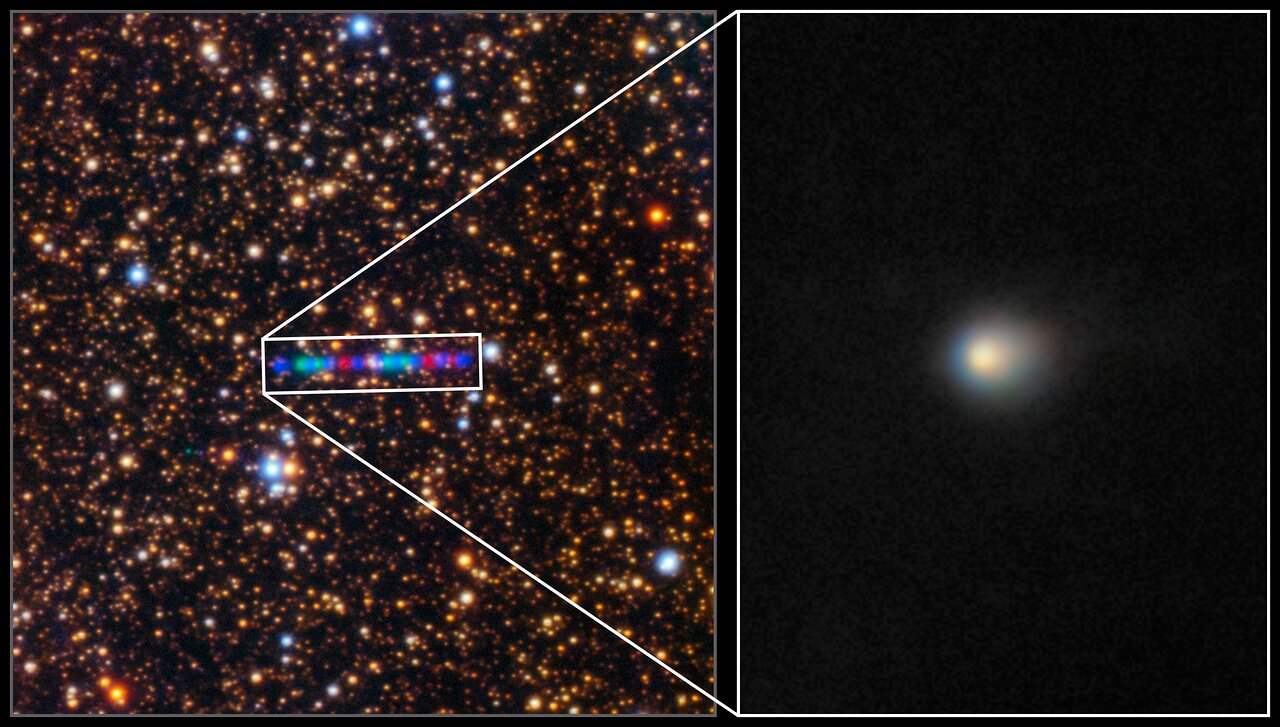Discovery and Classification
3I/ATLAS represents the third confirmed interstellar object detected in our solar system, following 1I/'Oumuamua in 2017 and 2I/Borisov in 2019. This remarkable celestial visitor was first identified by the Asteroid Terrestrial-impact Last Alert System (ATLAS) survey on July 1st 2025, marking another milestone in our understanding of objects originating from beyond our solar system.
Unlike its predecessors, 3I/ATLAS exhibits unique characteristics that challenge our current models of interstellar object behavior. Its distinctive spectral signature and unusual trajectory have made it a prime target for intensive astronomical observation and study.

First detection image of 3I/ATLAS captured by the ATLAS survey telescope system (Image credit: Gemini Observatory)
Physical Characteristics
Preliminary observations suggest that 3I/ATLAS is a comet-like object with an estimated nucleus diameter of approximately 1 kilometer (or smaller). As it approaches the inner solar system, the object has begun developing a distinctive coma and tail, indicating the sublimation of volatile materials from its surface.
Spectroscopic analysis has revealed no unusual composition that differs significantly from typical solar system comets. Spectroscopic data reported evidence of organics, silicates, and carbonate minerals mixed with the ice, which can all be found in Solar System comets.
Key Physical Properties
- • Estimated nucleus diameter: 1 km
- • Albedo (reflectivity): ~0.04-0.10 (very dark surface)
- • Rotation period: ~16 hours
- • Coma development: Faint and fuzzy developing coma (at 4.5 AU from Sun)
Orbital Dynamics and Trajectory
3I/ATLAS follows a hyperbolic trajectory that clearly indicates its extrasolar origin. The object's orbital eccentricity is 6.14, confirming that it is not gravitationally bound to our Sun and will eventually leave the solar system, never to return.
Current trajectory analysis suggests the object originated from the direction of the constellation Sagittarius (near the Milky Way's center), potentially from a stellar system located several dozen light-years away. Its journey through interstellar space likely lasted millions of years before entering our solar system.

Orbital trajectory of 3I/ATLAS showing its hyperbolic path through the solar system (Image credit: NASA)
Scientific Significance
The study of 3I/ATLAS provides unprecedented insights into the formation and evolution of planetary systems beyond our own. Each interstellar visitor carries with it a chemical fingerprint of its home system, offering clues about stellar formation processes and the distribution of materials throughout the galaxy.
International space agencies and research institutions have coordinated extensive observation campaigns to maximize the scientific return from this rare opportunity. Ground-based telescopes, space observatories, and even planned spacecraft missions are being utilized to study every aspect of this remarkable visitor.